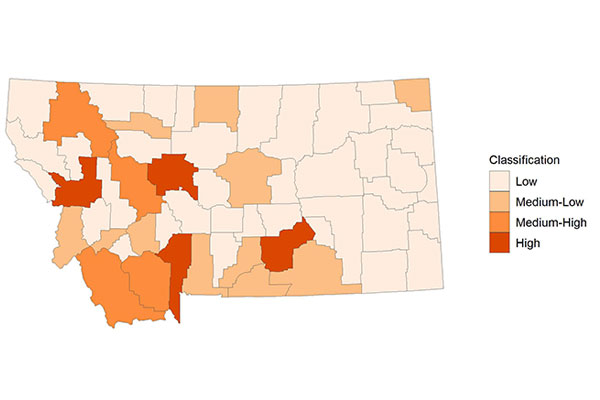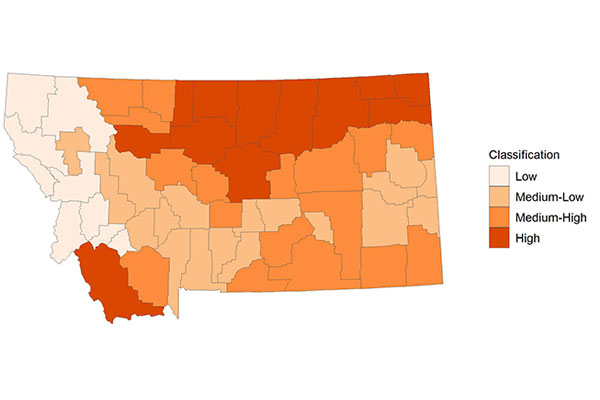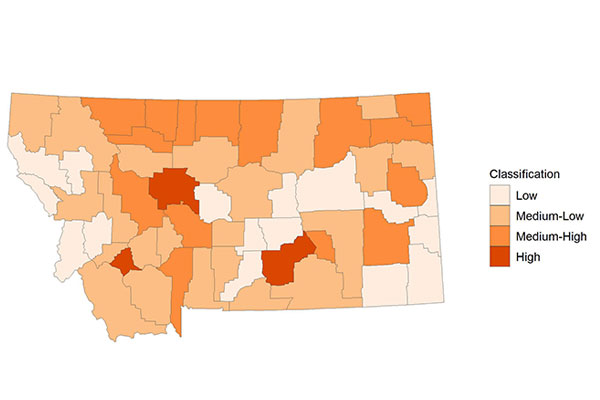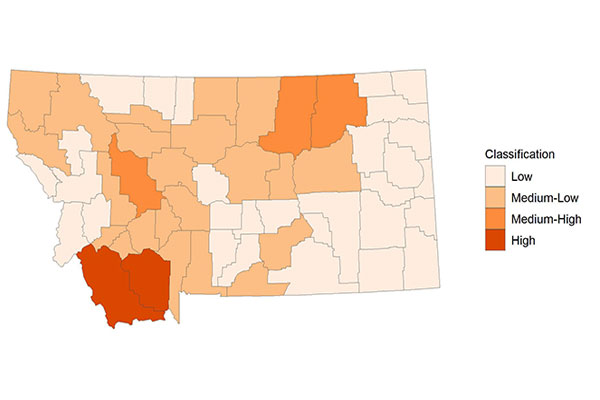Evaluating drought risk through vulnerability assessments
Vulnerability assessments are a key step in hazard mitigation planning because they can identify underlying structural weaknesses (i.e., vulnerabilities) in our social, environmental, and economic systems – these are what we experience as hazard impacts. However, understanding vulnerability tends to be more complicated for drought than for other natural disasters because drought, unlike hurricanes or wildfires, is a slow-moving, insidious phenomenon that can extend for weeks, months, and even years. Since we often do not realize the full range of impacts until the drought is over, it can be very difficult to untangle all the different underlying weaknesses that caused the impacts. Still, it’s worth conducting a vulnerability assessment because it helps us identify proactive measures we can implement to lessen the impacts of future drought – before the next one occurs.
Here's an example: Pasture production is limited during drought, so ranchers often need to purchase supplemental hay to feed their cattle. The added cost of buying and transporting the supplemental hay is a drought impact. However, identifying the underlying vulnerability that is causing the impact can be difficult. For instance, the rancher may not qualify for a certain relief program, or maybe the pasture soil needs more organic matter to increase the amount of moisture it can hold. In this case, it would be worthwhile to evaluate agricultural relief programs to make sure they’re reaching producers in need. It would also make sense to consider incentive programs for producers to integrate more conservation practices, like cover crops, into their operations. Vulnerabilities should be considered using a variety of lenses – social, ecologic, and economic – because drought affects our lives in many complex ways.
Drought Vulnerability in Montana
To assess Montana’s drought vulnerability, we focused on five different water-use sectors:
- Agriculture
- Conservation and land management
- Energy and industry
- Planning and community development
- Recreation and tourism
We used two approaches: one calculated vulnerability scores using existing, publicly-available data about Montana, while the other relied on insights offered by stakeholders during one-on-one interviews and through survey responses. The first approach used indicator data specific to each sector (e.g., crop sales for agriculture; population density for planning and community development) to compute a vulnerability score for each county, while the second approach analyzed common themes discussed by stakeholders. This blending of methods provided a comprehensive picture of drought vulnerability by integrating indicator data with actual, lived experiences of Montanans.
An overview of the resulting vulnerability assessment is below. Each water use sector includes a map depicting the relative level of vulnerability across the state and the main themes discussed by stakeholders.
The maps are intended to be a visual tool that allow us to make general comparisons between counties within the same water use sector. Note that the maps are sector specific, so they cannot be used to compare the vulnerability of two different sectors within the same county. Find more data, including how vulnerability changes across seasons, on the full interactive map.
For more information about how vulnerability scores were calculated, as well as deep detail on the stakeholder interviews, can be found in the full Montana Drought Vulnerability Assessment.





